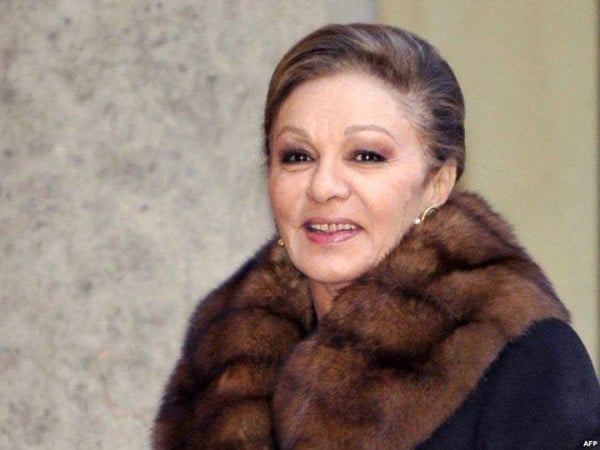
Farah Diba Pahlavi at the Woman of the Year-Awards, December 2015, in Vienna. She amassed the the legendary collection in the 1970s. Photo: via Facebook
In the fall of 2015, it has emerged that a portion of the legendary art collection of Iran’s Shah could be on its way to Berlin, after Germany’s foreign minister Frank-Walter Steinmeier signed a statement of intent in October to display some of the artworks at Berlin’s state museums.
But what was celebrated in Germany as a coup at the time, is in fact far from certain. Berlin’s museums are facing stiff competition from international institutions including Rome’s Maxxi museum, which wants to organize an exhibition in 2017, and Washington’s Hirshhorn which is also in the race for showing the famed collection.
And then there’s the cost. The director of Frankfurt’s Schirn Kunsthalle, Max Hollein—who tried to organize a traveling exhibition of the collection before international sanctions were lifted—told the German paper Die Welt that Iran wanted to charge €1 million for every destination. “For us the fee of €1 million per exhibition was not tenable, our offer was significantly lower,” he said.
According to Die Welt, there are rumors claiming that the proposed sum negotiated by Germany’s Foreign Ministry to show the collection in Berlin is in the region of €3 million.
Germany’s foreign minister Frank-Walter Steinmeier signed a deal to bring Iran’s Farah Diba collection to Berlin.
Photo: Wikimedia Commons
Ingolf Kern, of the Prussian Cultural Foundation—which manages Berlin’s state museums—didn’t confirm the number, but said the fee was a “significant sum.”
Now, critics accuse the German Foreign Ministry of using public funds to grease Iran for diplomatic purposes. The lifting of sanctions has opened up significant trade opportunities with Iran that Germany’s export-based economy could profit from.
Meanwhile, behind the scenes a debate is unfolding concerning the morality of depriving the Iranian people of these cultural gems at a time when President Rohani’s liberal political approach is slowly encouraging Tehran’s museum to tentatively display selected pieces.
Funded by Iran’s oil wealth, the 1,500 piece collection was assembled by Farah Diba Pahlavi, the glamorous wife of the last Iranian Shah, Mohammad Reza Pahlavi. The works were bought from Western galleries and auction houses in the 1970s to fill an ambitious newly constructed museum.
The collection remains in storage at the Tehran Museum of Contemporary Art.
Photo: Wikimedia Commons
Although the empress witnessed the opening of the museum come to fruition in 1977, the project was short-lived. Only two years later, the 1979 Islamic revolution brought an abrupt end to aesthetically liberal, but politically brutal Shah regime.
After seizing power Iran’s ayatollahs banished the collection to storage, hiding away priceless works by leading Western Impressionist, Modern, and contemporary artists including Monet, Bacon, Picasso, Ernst, Braque, Giacometti, Pollock, Rothko, Judd, Warhol, Magritte, Hanson, Close, and others.
Despite persistent rumors of secret sales there’s only been one confirmed case of a work being deaccessioned from the collection. According to Die Welt, Iran swapped Willem de Kooning’s Woman III (1953) for a valuable religious text.
Today the de Kooning belongs to mega collector and hedge-fund manager Steven Cohen, who bought it from billionaire music mogul David Geffen for $137.4 million.